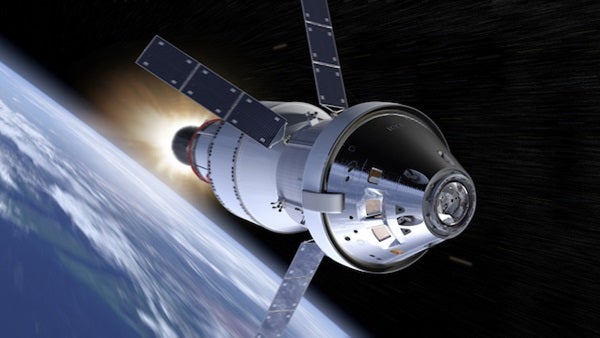When it comes to a trip to the Red Planet, your mileage may vary — literally. Earth and Mars are constantly moving, but they don’t stay a constant distance apart. Furthermore, spacecraft from Earth don’t travel in a straight line to the Red Planet. Instead, astronauts leaving Earth would follow a path known as the Hohmann transfer orbit, an ellipse from where Earth is now to where Mars will be in the future. This orbit requires the least energy (and thus the least fuel) and allows the spacecraft to arrive within seven to nine months.
But you can’t just decide to pick up and go. Mars and Earth are in their best position for interplanetary travel only every 26 months. A launch outside that window can dramatically increase how long the spaceship — and any astronauts — spend in space.
NASA’s Orion spacecraft will carry crew members to Mars on top of the Space Launch System (SLS) rocket, which will be more powerful than the Saturn V rocket that carried astronauts to the Moon. The agency plans to test the pair with Exploration Mission-1 (EM-1), an uncrewed journey around the Moon and back to Earth, in 2019.
Nola Taylor Redd
Freelance science journalist
and Astronomy contributor










